mind maps
Love – Perhaps the most elusive of all sensations and a rugged terrain to study. Intangible and complex … can it be conceptualised?
The Love Triangle

Triangular Theory of Love by Robert J. Steinberg is a social psychologist’s take on love and relationships.
It’s not one of those handbook theories that lure people with ‘10 secret keys to finding and cultivating love’.
And – though not offering a normative approach to love, it reflects people’s implicit theories and perceptions of love quite neatly.
The geometric form of The Love Triangle is of course a much simplified rendering of reality. It was not conceived as a strict model but as a metaphor for L O V E.
The theory’s main postulate is to understand and picture love in terms of its 3 main components: intimacy, passion and decision/commitment – each of which form the vertices of a triangle. Each component describes a different aspect of love.
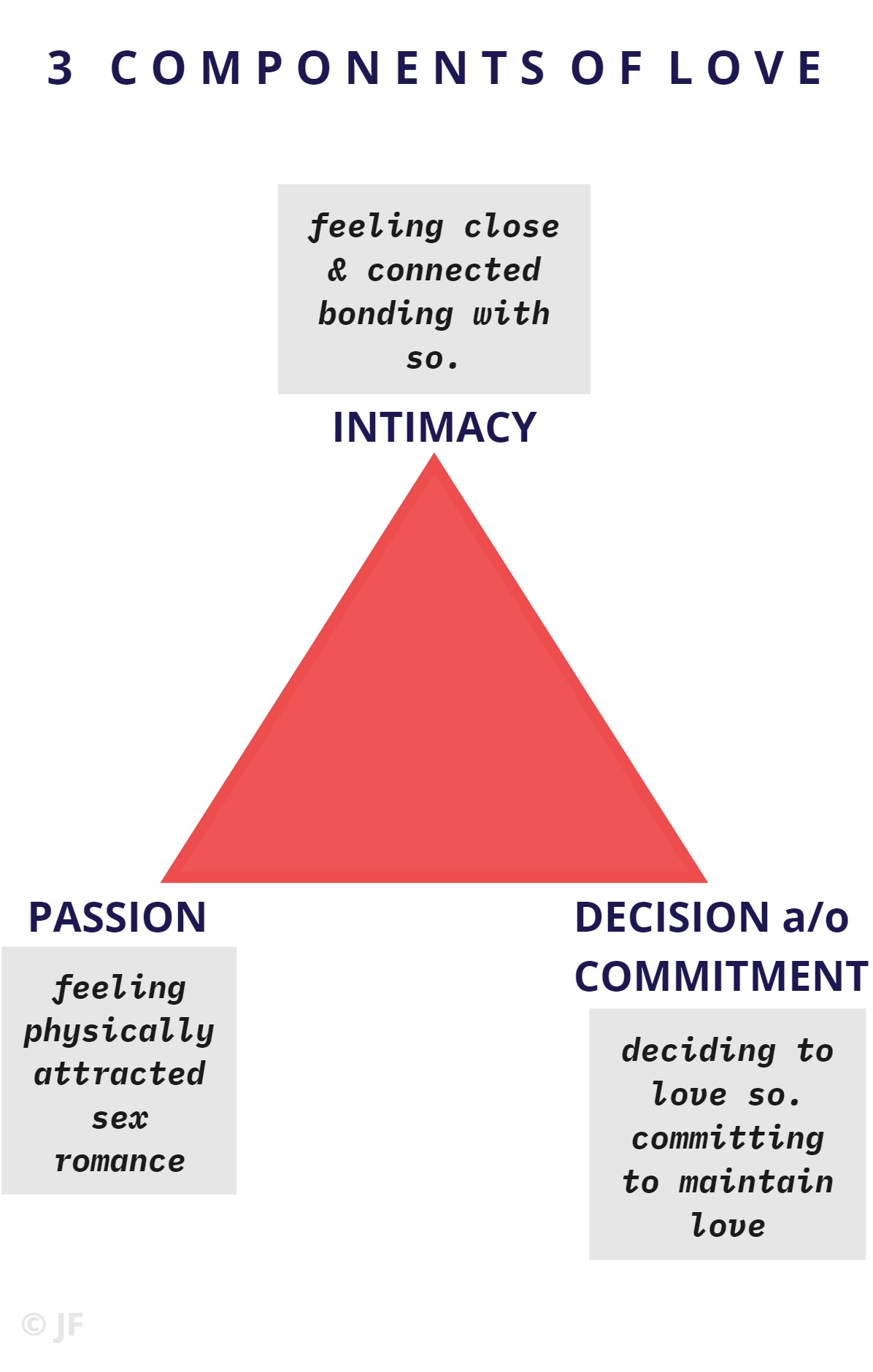
The 3 components are separate but not isolated from each other. In fact, they interact with each other:
For instance, intimacy may lead to greater passion, while commitment may lead to greater intimacy and/or at times to lesser passion in a relationship.
Second, these components are not fixed or stable entities:
While they form important elements of any love relationship, they can vary greatly from one relationship to another and over time within a given relationship.
Components can be combined pairwise to yield 6 different kinds of love (in clockwise order):
1 Liking 2 Companionate Love 3 Empty Love 4 Shallow Love 5 Mad Love 6 Romantic Love
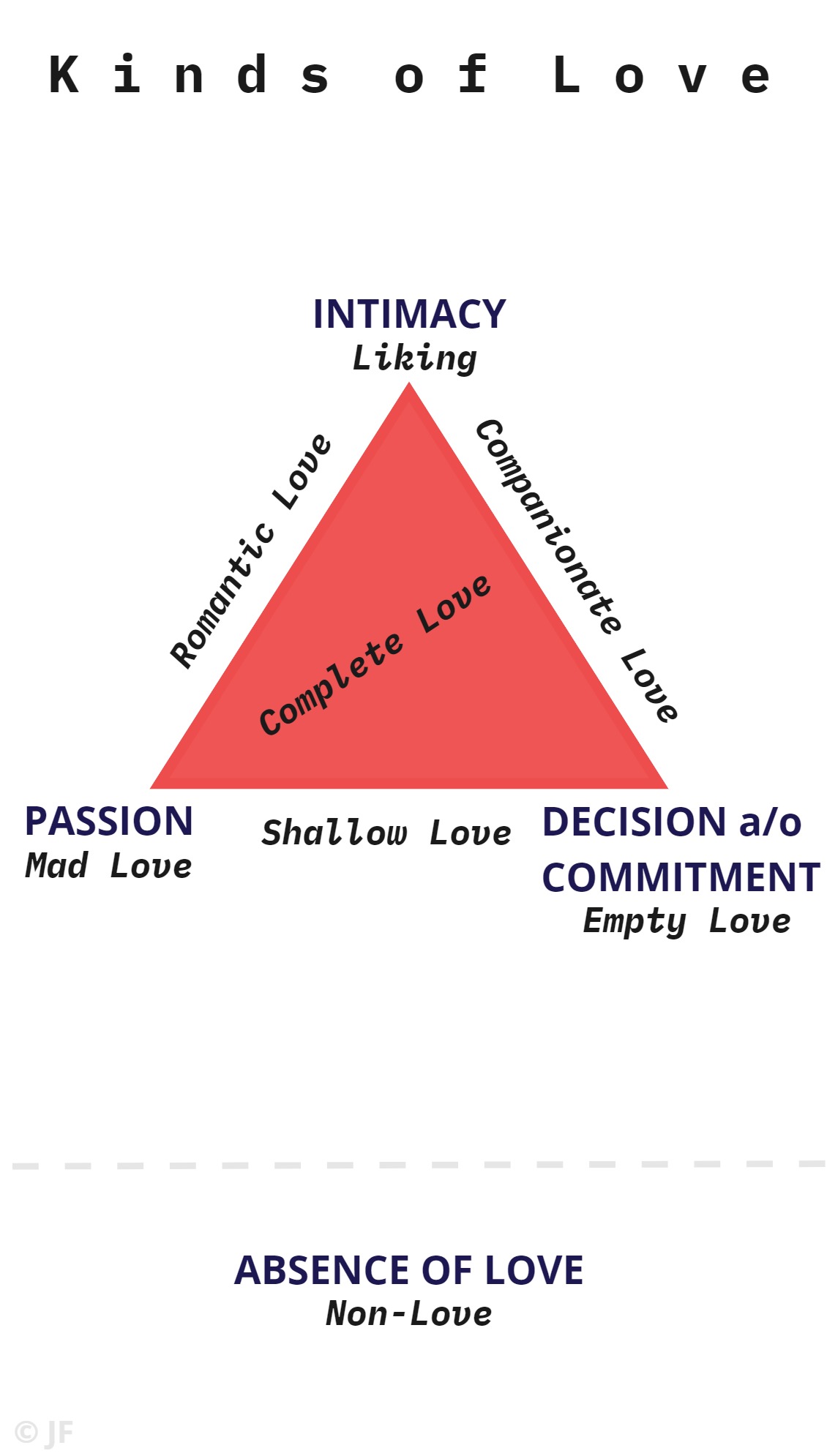
The combination of all 3 components results in Complete (or consummate) Love, whereas the total absence of components is referred to as Non-Love. So in total then, you get 8 special cases.
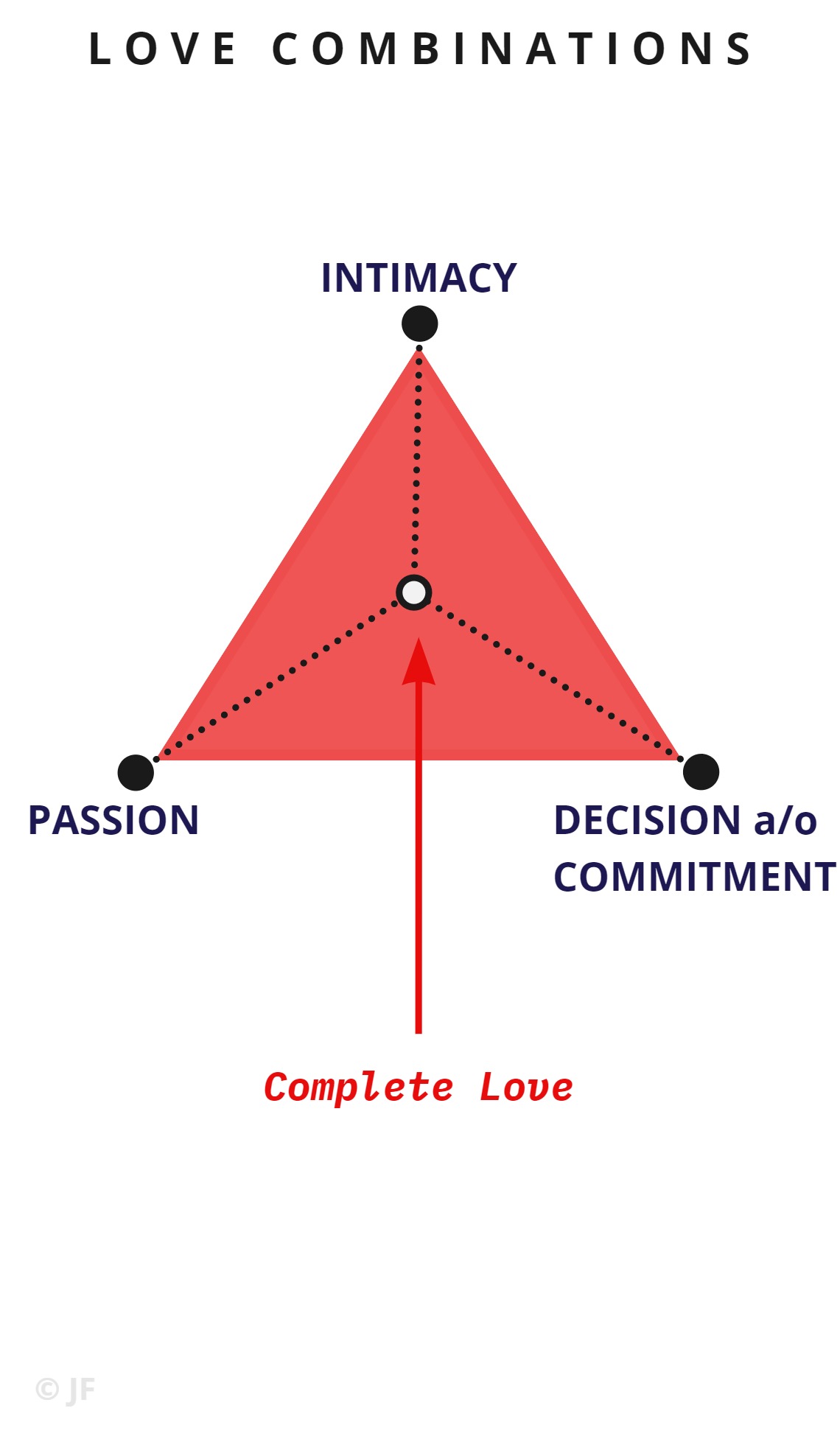
Most love relationships are impure combinations of several co-existing kinds of love that are present at different rates.
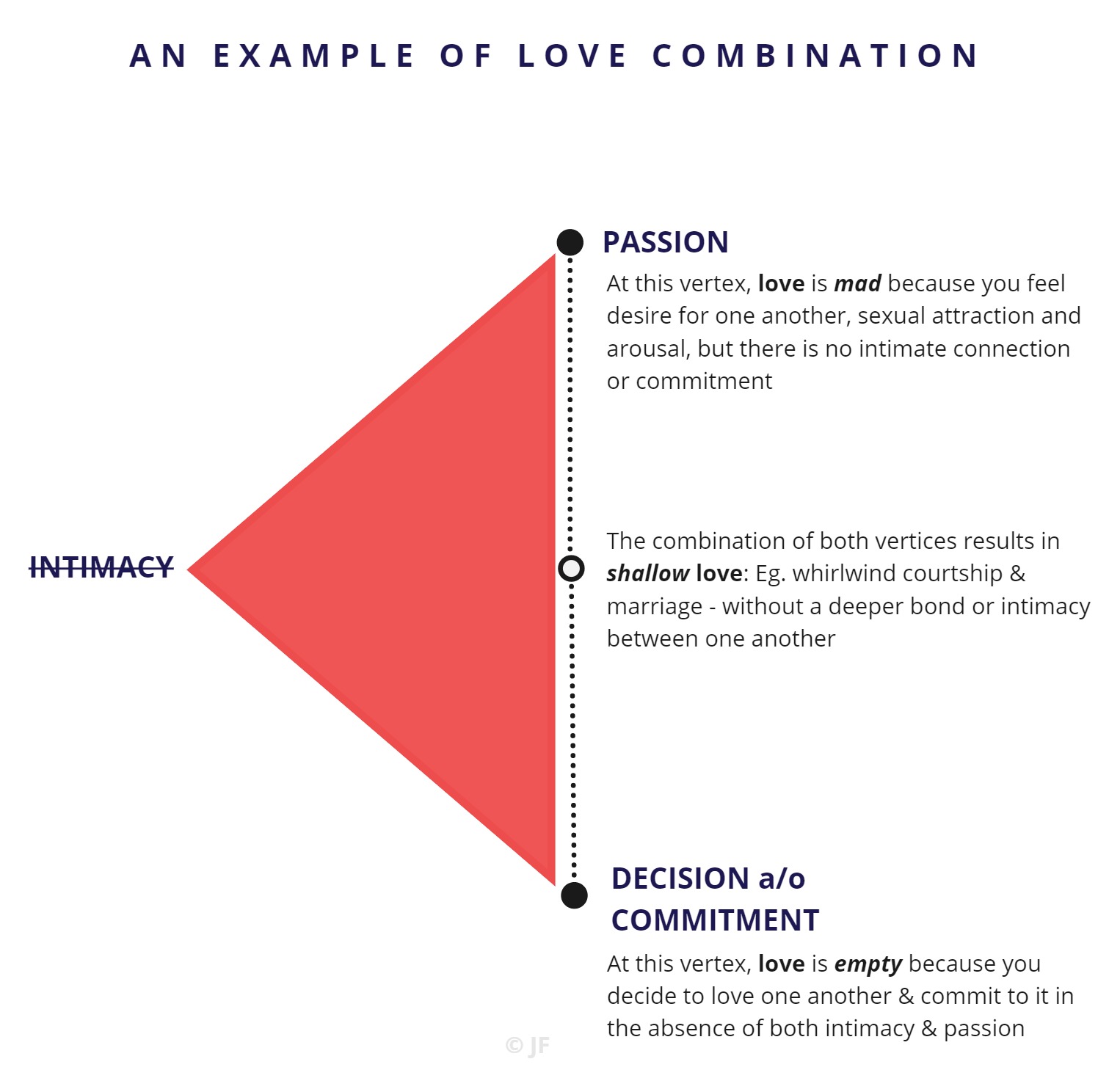
The Geometry of Love depends upon two factors: amount of love (the area of the triangle) and balance of love (the shape of the triangle).
A small triangle compared to a bigger one can be interpreted as a metaphor for less pronounced love. An equilateral triangle is a perfect example of balanced love, while isosceles or scalene triangles are visual representations of imbalance.
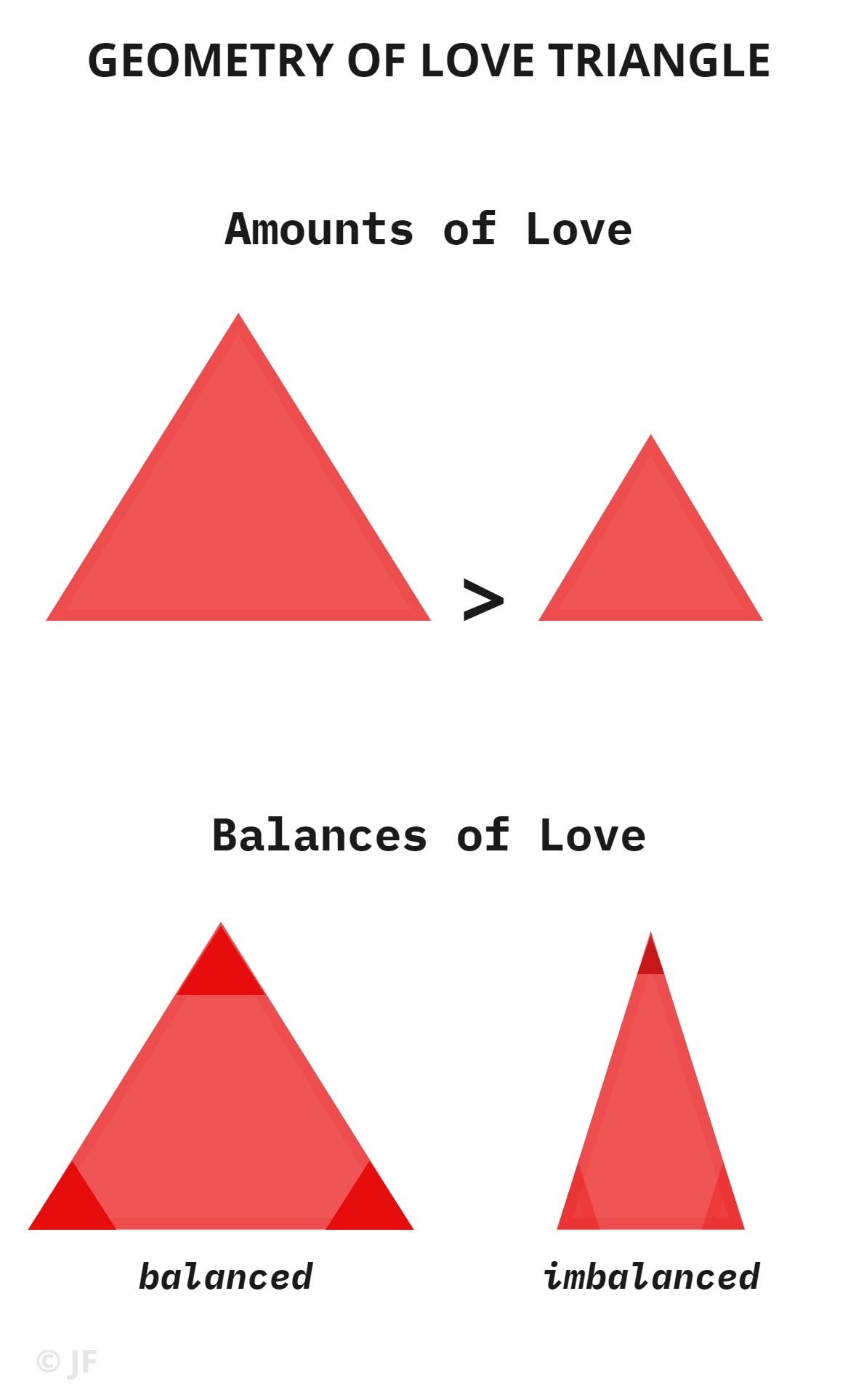
In reality, love does not just involve a single triangle but multiple triangles, of different size and shape.
For instance, you can compare and contrast idealised love with the reality of a love relationship.
You may want to compare how you perceive the love triangle to how your loved one views it.
Or you can juxtapose triangles of actions that express acts of love and triangles of feelings that describe inner feelings and perceptions of love.
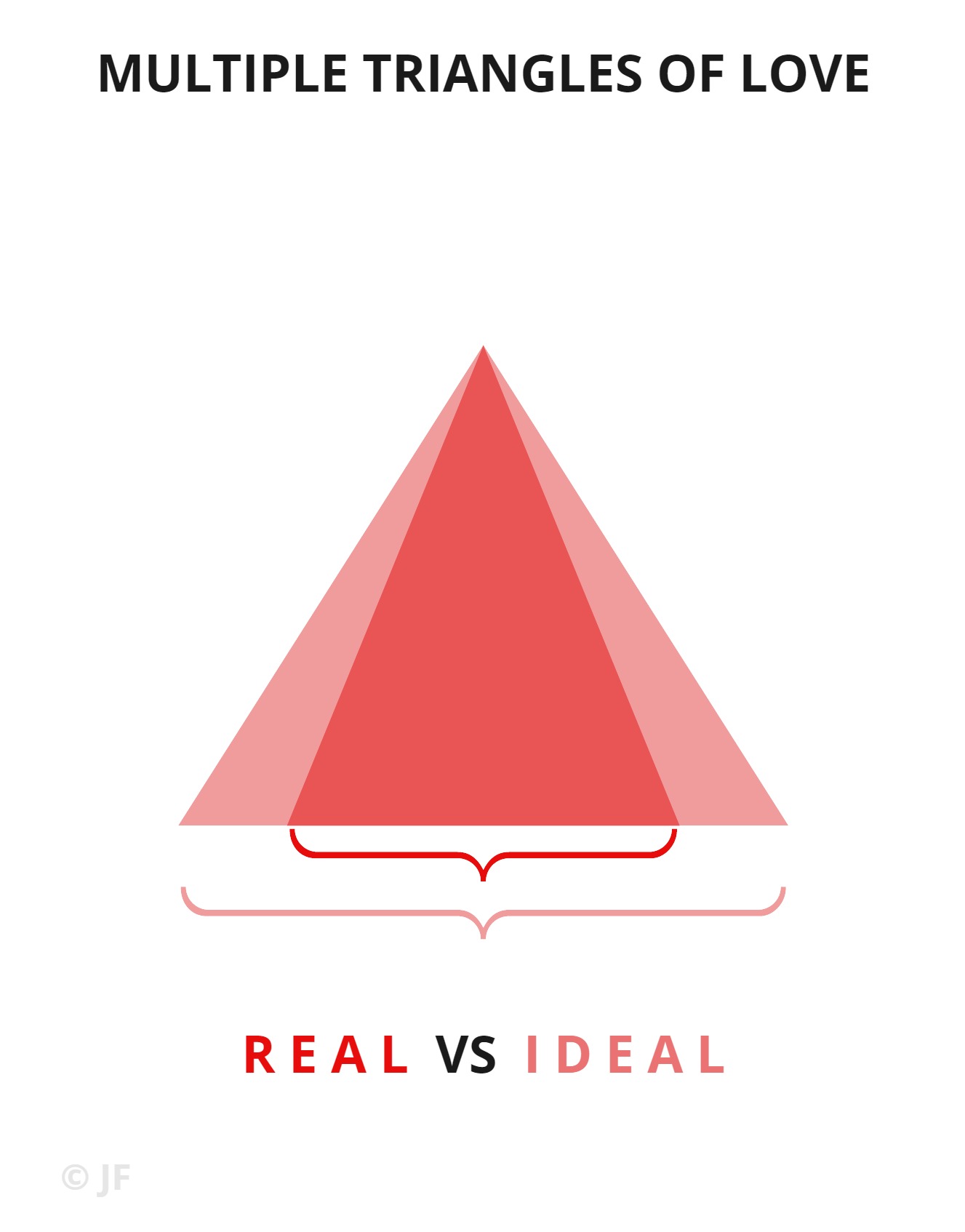
References
Sternberg, R. J. (1986). A triangular theory of love. Psychological review, 93(2), 119.
Sternberg, R. J. (1988). Triangulating love. In R. J. Sternberg, & M. L. Barnes (Eds), The psychology of love (pp. 119-138). New Haven, CT: Yale University Press.
Sternberg, R. J. (1997). Construct validation of a triangular love scale. European Journal of Social Psychology, 27(3), 313-335.